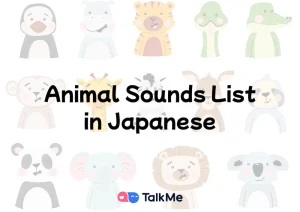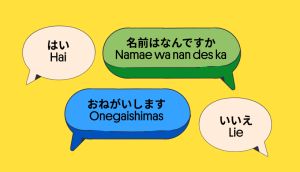你好的日語詞彙及其意義
Whether you’re traveling to Japan, connecting with Japanese friends, or beginning your language learning journey, knowing the right 日語單詞 for hello is a must. In Japanese culture, greetings are more than just a way to say hi—they are essential to polite communication. Mastering the correct greeting shows respect, awareness of context, and cultural understanding.
If you’re ready to go beyond memorization and actually use these greetings in real conversations, TalkMe AI is here to help. This AI-powered chatbot is designed for effective, immersive language learning—and it’s ideal for mastering Japanese words for hello.
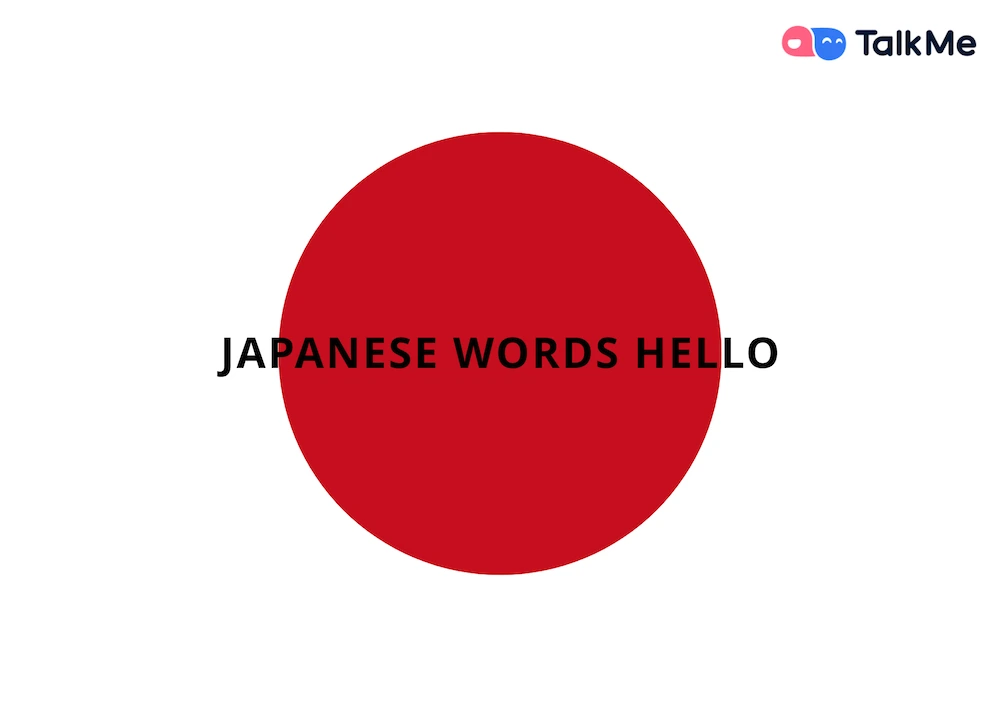
Unlike English, Japanese uses different greetings based on the time of day, social setting, and the level of formality. That means a simple “hello” isn’t always so simple! In this blog, we’ll break down the most common ways the Japanese language says hello, how to write them, and how you can practice naturally with TalkMe AI—your smart, AI-powered language tutor.
Part 1: Common Japanese Words for Hello
When learning greetings in Japanese, it helps to see how they’re written and used in real situations. Here’s a breakdown of the most frequent Japanese words for hello:
| Hiragana | Romaji | Pronunciation | 意義 | When to Use It |
|---|---|---|---|---|
| おはよう (ございます) | Ohayou (gozaimasu) | Oh-ha-yo goh-zah-ee-mahs | 早安 | Before noon |
| こんにちは | Konnichiwa | koh-nee-chee-wah | Hello | Daytime |
| こんばんは | Konbanwa | kohn-bahn-wah | 晚上好 | After dark |
| もしもし | Moshi moshi | Moh-shee moh-shee | Hello | On the phone, informal |
| いらっしゃいませ | Irasshaimase | ee-rah-shy-mah-seh | Welcome | Greeting a customer |
| ただいま | Tadaima | tah-dah-ee-mah | I’m back | Arriving home |
| よ | Yo | yoh | Hi | Casual hello |
| すみません | Sumimasen | soo-mee-mah-sehn | Excuse me | Approaching a stranger |
Each Japanese word of hello carries subtle cultural meaning. For example:
- Ohayou is casual, while Ohayou gozaimasu is more formal—ideal for workplace settings or when greeting someone older.
- Konnichiwa works well during the day and is the most direct equivalent of “hello” in English.
- Moshi moshi is unique to phone conversations—using it face-to-face would sound strange.
- Irasshaimase is what you’ll hear when entering a shop or restaurant; it’s more of a “welcome,” yet deeply rooted in greeting culture.
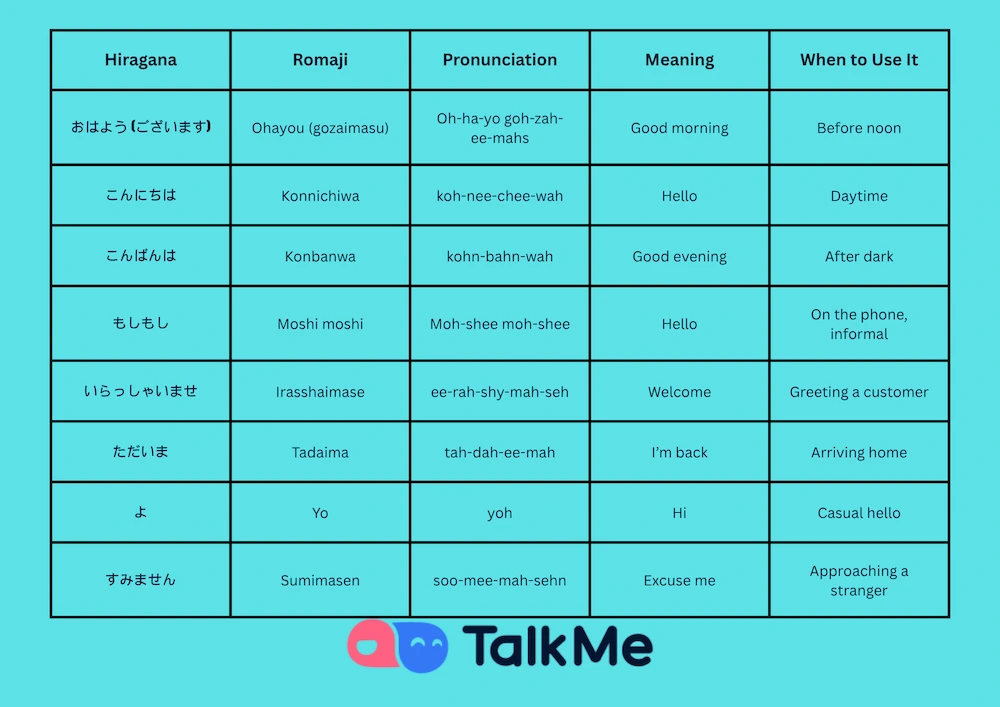
So, when you’re asking how the Japanese language says hello, the answer depends on context. There isn’t a one-size-fits-all “hello”—and that’s what makes it both fun and challenging to learn!
Part 2: How to Write Hello in Japanese
Now let’s dive into how to write hello in Japanese. The language uses three writing systems: Hiragana, Katakana以及 Kanji. Most greetings are written in Hiragana, which is the first script learners usually study.
Here are examples of “hello” in writing:
- こんにちは (Konnichiwa) – Hiragana
- オハヨウ (Ohayou) – Katakana, often used for stylistic emphasis or foreign speakers
- Some greetings like いらっしゃいませ are only in Hiragana, while words like ただいま can also appear in Kanji depending on the context.
Romaji (the Roman alphabet version) is used to help non-native speakers learn pronunciation:
- Konnichiwa → こんにちは
- Ohayou → おはよう
- Sumimasen → すみません
So when someone asks how to write hello in Japanese, the best answer is: start with Hiragana, and use Romaji as a pronunciation guide.
Part 3: Cultural Tips for Greeting in Japan
Understanding the words is one thing, but using them properly is just as important. In Japan, greetings often come with a bow—the deeper the bow, the more respect you’re showing. Eye contact is generally brief and less direct than in Western cultures, especially in formal situations.
Tone and volume also matter. A friendly Ohayou gozaimasu in the morning should be spoken clearly but gently. In business settings, Konnichiwa should sound calm and respectful, while Irasshaimase is delivered with enthusiasm in stores.
Greeting a friend? A simple Yo 或 Moshi moshi on the phone is fine. Greeting a teacher or elder? Stick with formal language like Ohayou gozaimasu 或 Konbanwa, and bow appropriately.
Part 4: Learn to Say Hello in Japanese with TalkMe AI
If you’re ready to go beyond memorization and actually use these greetings in real conversations, TalkMe AI is here to help. This AI-powered chatbot is designed for effective, immersive language learning—and it’s ideal for mastering Japanese words for hello.
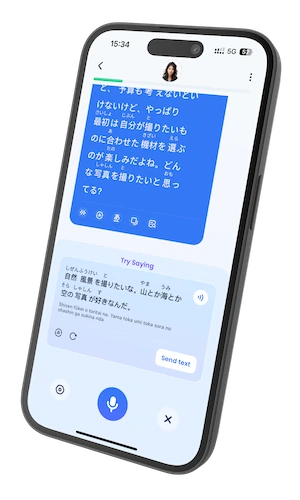
Why TalkMe AI?
TalkMe AI combines cutting-edge LLM (Large Language Model) technology with interactive learning tools. Here’s how it can boost your Japanese greeting skills:
- 與 AI 導師自然對話: Practice greetings in everyday scenarios like shopping, commuting, or chatting with friends.
- 語法反饋與糾正: Learn the right way to say things, including polite forms like “gozaimasu.”
- 真實生活情境: Role-play walking into a café, greeting your boss, or answering the phone.
- Voice Recognition & Pronunciation Help: Make sure you’re saying “Konnichiwa” the right way with audio feedback.
- Adaptive Learning Paths: Whether you’re a beginner or intermediate learner, TalkMe AI adjusts to your pace and needs.
Unlike language apps that focus only on vocabulary, TalkMe AI teaches you how the Japanese language says hello 和 when to say it. You’ll never confuse “Moshi moshi” for a face-to-face greeting again!
Best of all, you can use TalkMe AI to learn not just Japanese, but also English, Spanish, French, Korean, and Chinese—all through engaging, human-like conversation.
總結
From Ohayou gozaimasu in the morning to Konbanwa after dark, Japanese greetings are rich in meaning and etiquette. Mastering the right way to say “hello” is a gateway to deeper cultural understanding and smoother conversations.
Whether you’re learning for travel, work, or personal growth, don’t stop at memorization. Practice your Japanese words for hello with TalkMe AI—your smart, responsive language tutor that helps you speak with confidence and clarity.
Ready to greet the world in Japanese? Start with “Konnichiwa,” and let TalkMe AI take you the rest of the way.

